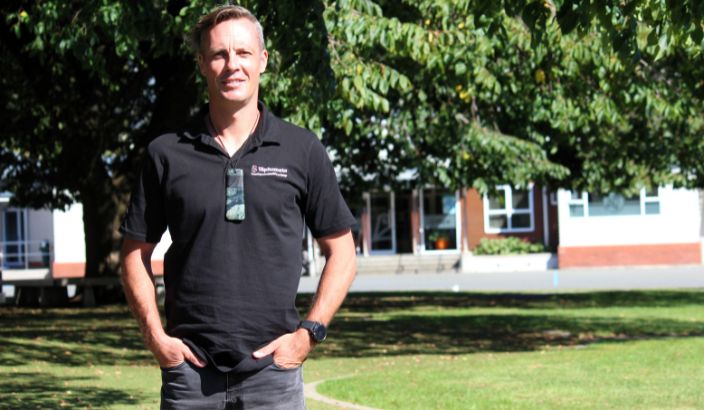‘Tools down’ for attendance service


Mike Foster, who leads the local attendance service, Tāpitomata, worries that families may not get the support they need due to funding cuts. Photo: Kate Russell.
Funding cuts to Nelson’s school attendance service are being labelled as “short-sighted” at a time when the Government has called for a crackdown on truancy.
Funding for the Ministry of Education’s attendance service is set to reduce from $1.58 million to $1.34 million a year in the Nelson/Marlborough/West Coast region.
Four providers in the region will have reduced funding, and the three other providers have no change or an increase. Funding will be re-distributed to other services working with chronically absent and non-enrolled students, according to the ministry.
Mike Foster, who leads the local attendance service, Tāpitomata, says for him and his team, it will be “tools down” from the end of June, with uncertainty around what the service will look like going forward.
Although the ministry says the cuts are an “interim step” while work is underway to further improve the effectiveness of attendance services from the start of 2026, Mike worries that the work they have done so far will be lost.
“It is a bit short-sighted… it’s taken a lot to gain the trust of the community, whānau and schools. We were building something up to be sustainable.”
They currently work with students aged six to 16 from 34 schools in the region.
“The big thing is that it puts a lot of pressure back onto the schools… which we were trying to alleviate, so some whānau might not have the support that they need.
“The cuts will also really reduce our capabilities… the real difference will be seen next year. A lot of the work that we do is face-to-face and that sees a higher success rate.”
The ministry’s operations and integrations leader, Sean Teddy, says attendance officer contracts were established in 2023 to provide support to schools in the development of strategies to address absence within their schools.
“Informal feedback suggests most schools now have those strategies in place,” he says.
Sean also says that two reviews of the attendance service showed that while some attendance officers are being welcomed into schools, “many have found it difficult to perform the role as envisaged”.
“It has not been possible to determine the effectiveness of the role, but the feedback we have received is, at best, mixed.”
Sean says they will now be prioritising the support of individual students above the support to schools provided by attendance officers.
“Some providers have seen insufficient funding while others receive a very high rate per case. Provider variations reflect local referral rates, regional funding approaches to rural isolation and socio-economic factors.
“Our priority in re-distributing the attendance officer funding has been to ensure that all providers have enough funding and to reduce the differences in the amount providers currently receive for each case they manage.”
